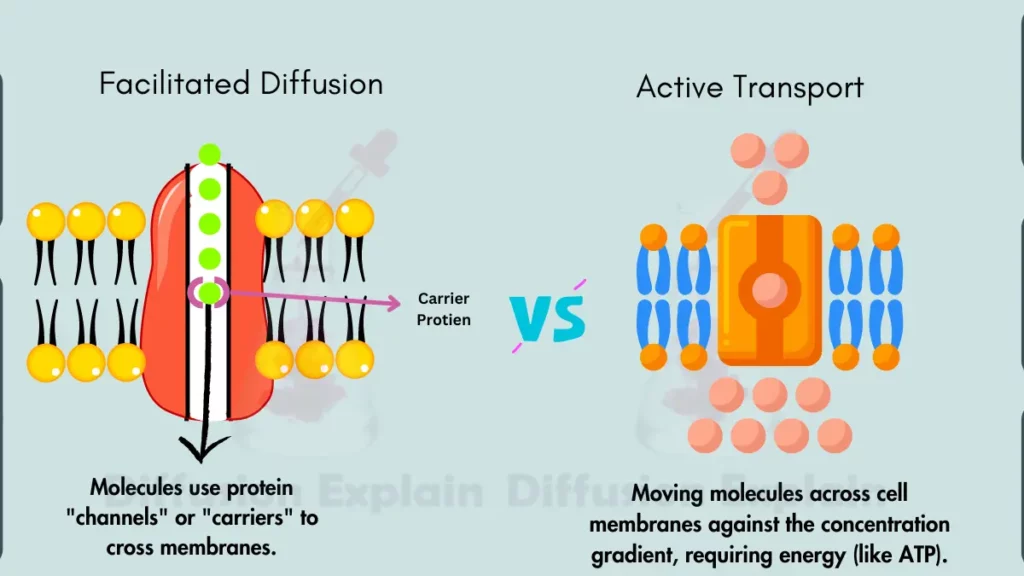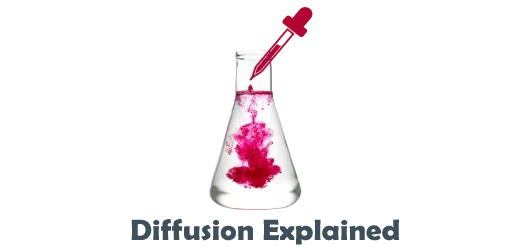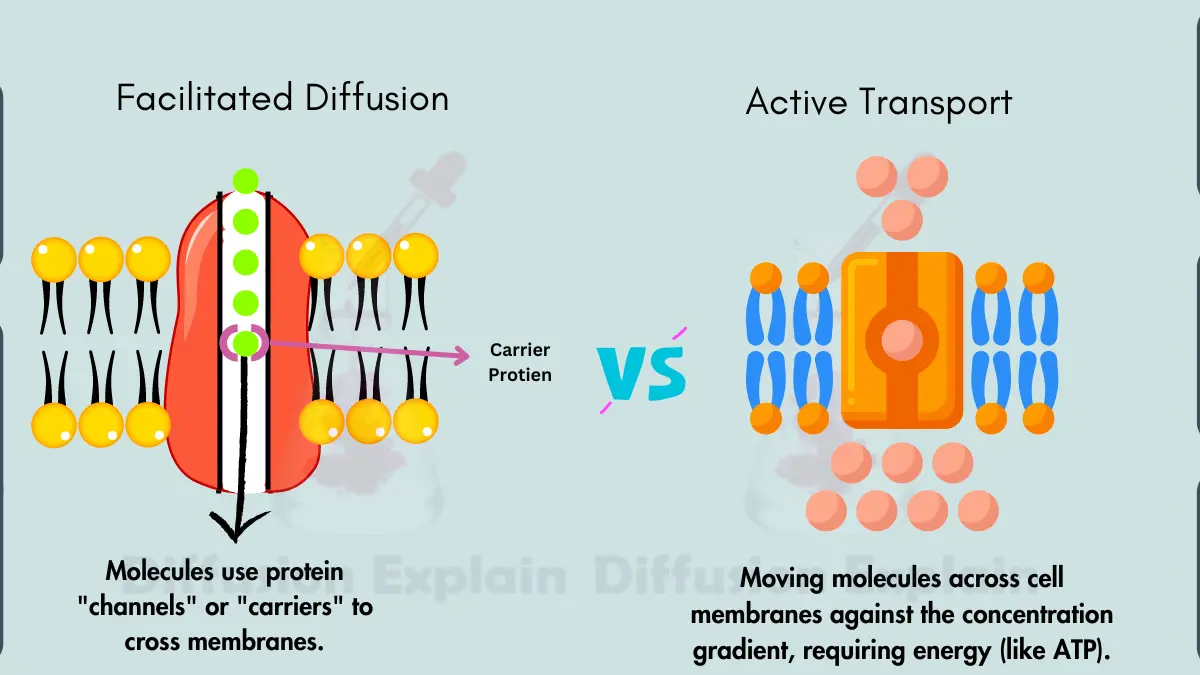The main difference between facilitated diffusion and active transport is the difference in their energy requirements and the direction of movement across the membrane. Facilitated diffusion is a passive process that requires no energy input, while Active transport requires energy, typically in form of ATP.

Facilitated diffsuion allows movement of molecules from high concentration to low concentration, while Active transport moves molecules from low concentration to high concentrration.
Facilitated Diffusion vz Active Transport
Here’s a comparison table between facilitated diffusion and active transport:
| Feature | Facilitated Diffusion | Active Transport |
|---|---|---|
| Definition | Passive movement of molecules across a membrane | Active movement of molecules against a concentration gradient |
| Energy Requirement | No energy input required | Energy (ATP) is required |
| Transport Proteins | Utilizes specific transport proteins | Utilizes specific transport proteins |
| Movement Direction | Moves molecules along the concentration gradient | Moves molecules against the concentration gradient |
| Specificity | Specific transport proteins are required for each molecule | Specific transport proteins are required for each molecule |
| Saturation Effect | Exhibits saturation effect where transport rate plateaus | Can continue against concentration gradient, no saturation |
| Rate of Transport | Limited by the number of available transport proteins | Can transport molecules at a faster rate |
| Examples | Glucose transport through GLUT proteins | Sodium-potassium pump |
Also Read:

